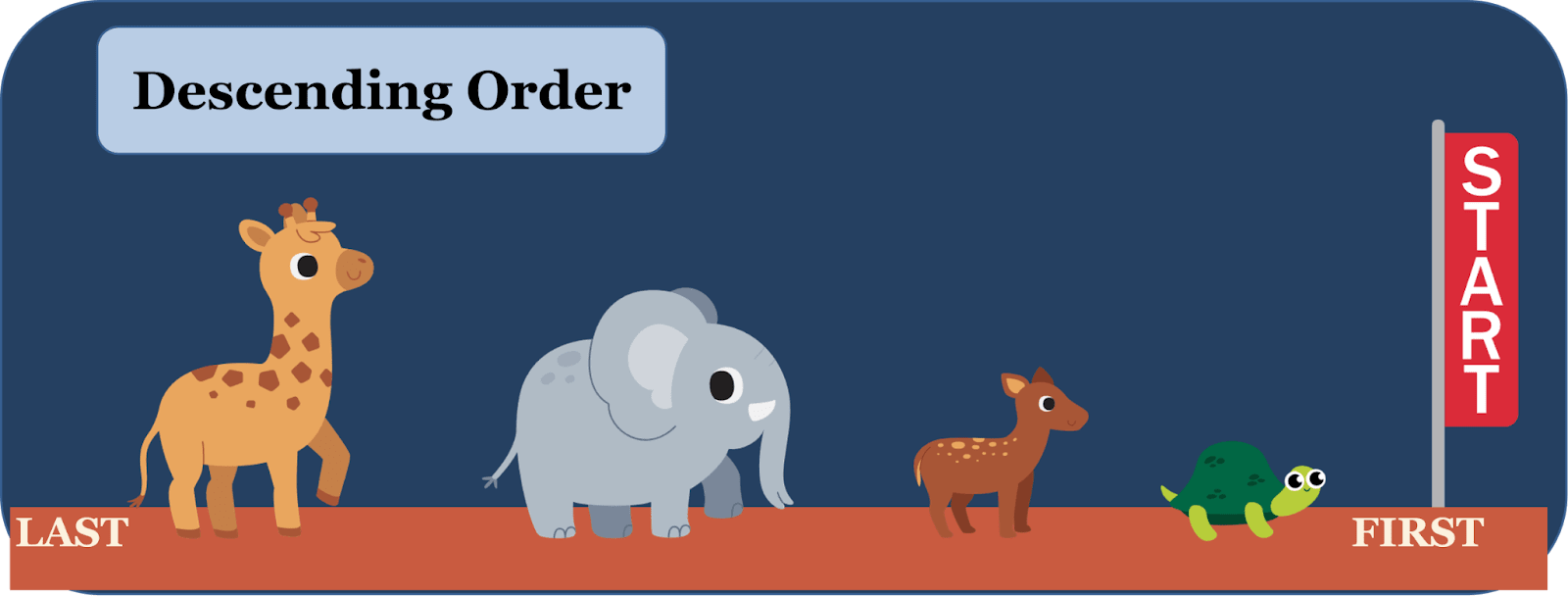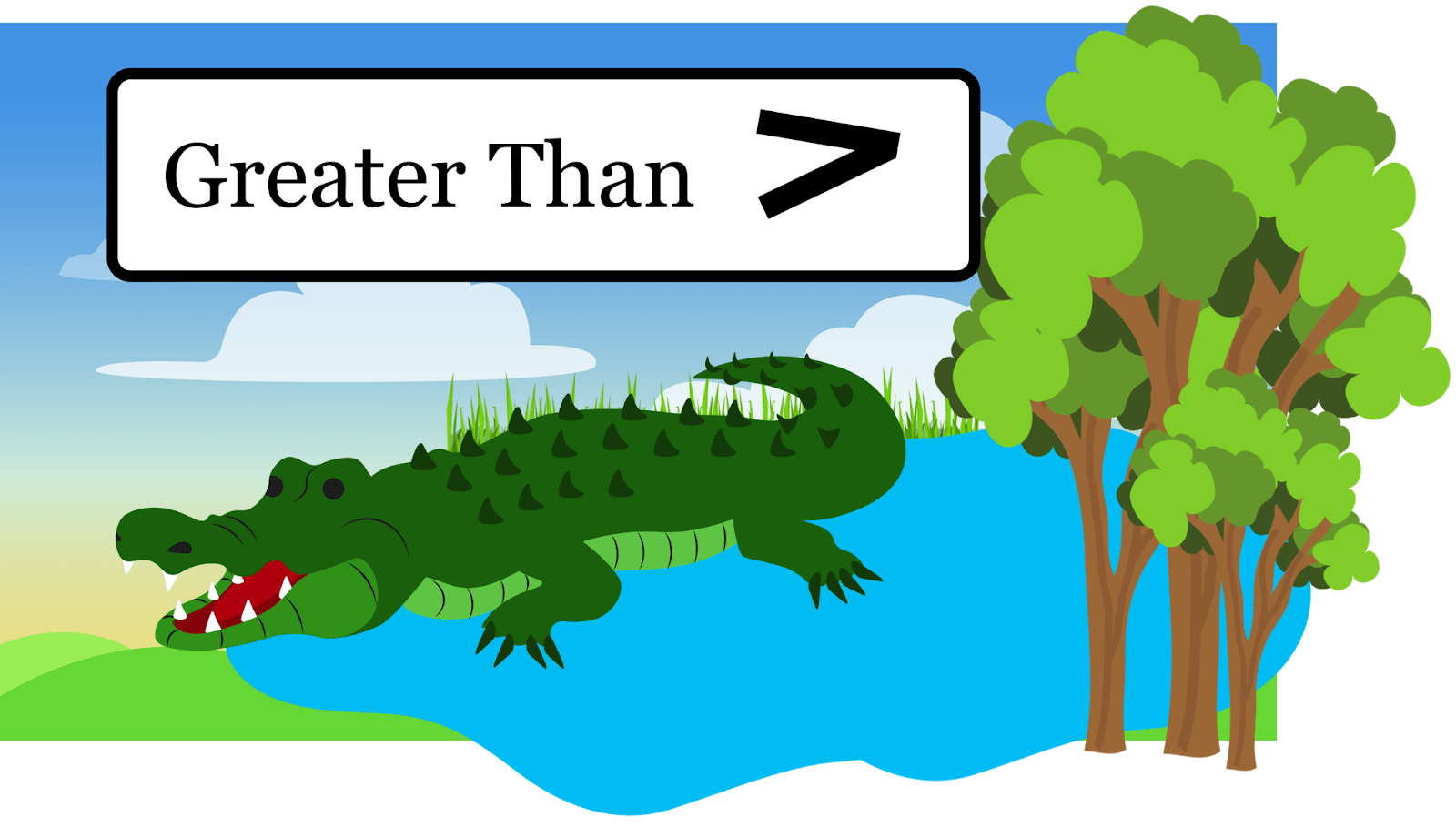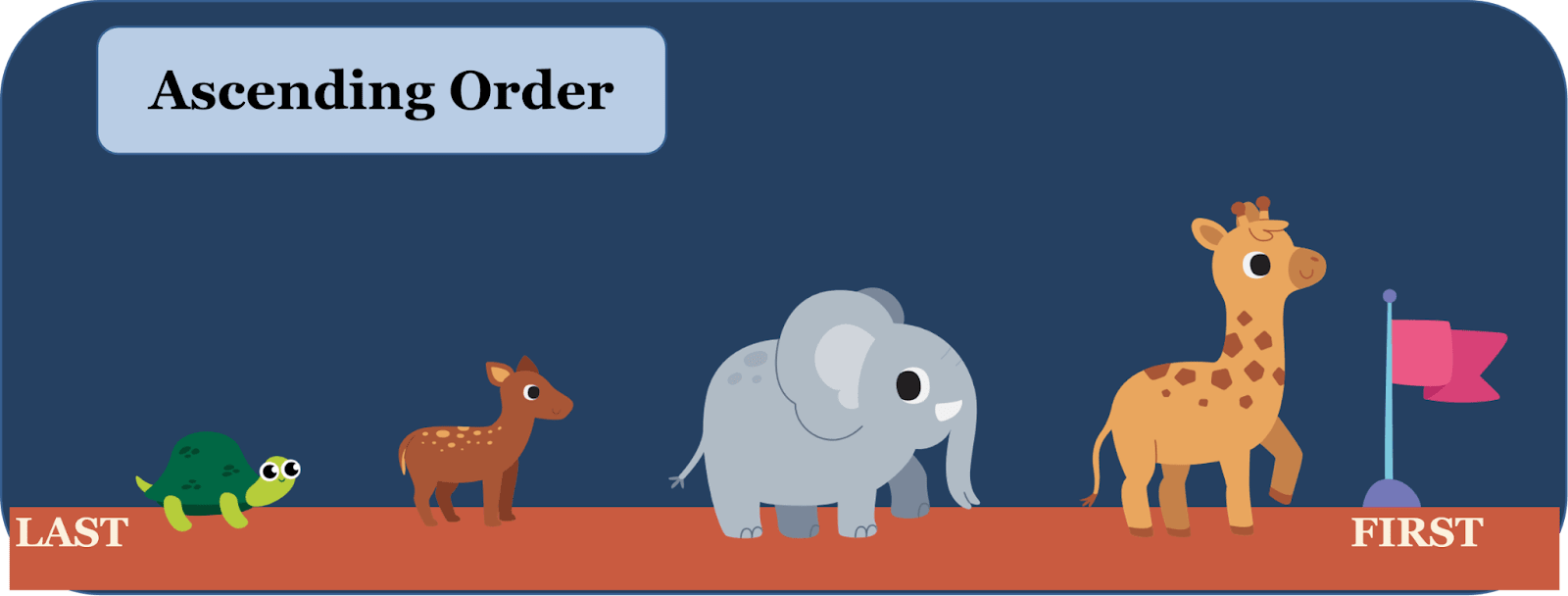Descending Order
Descending order means listing numbers from largest to smallest. This ordering method has been used since ancient times, when people used to count, compare, and trade. Let us understand the decreasing order, its symbol, the comparison between the orders, and some examples.
Table Of Contents
- What is Descending Order?
- Descending Order Symbol
- Ascending Order and Descending Order
- Difference between the Ascending and Descending Order
- Examples of Descending Order
- Conclusion
- FAQs on Descending Order
What is Descending Order?
Descending order is nothing but writing numbers from largest to smallest. Not only numbers, but it also includes letters, measuring quantities, patterns, etc. It is also known as decreasing order. In a simple way, we say that arranging the values from the highest value to the lowest value. All types of numbers can be represented in descending order. Let us take an example: 9, 2, 3, 8, 7, 5, 6, 1. First, identify the biggest number in the set, i.e., 9. Then, the second biggest number is 8. Similarly, the smallest number is 1. Now, arrange the numbers from largest to smallest.
9 > 8 > 7 > 6 > 5 > 4 > 3 > 2 > 1

The above image shows the decreasing order of animals based on their size.
Descending Order Symbol
The symbol used to represent the descending order is the greater-than sign “>”. The open end shows the largest number, and the closed end shows the smallest number. One can imagine the alligator as shown in the image below.

Sometimes people use just a comma to write the numbers in descending order.
For example, let us arrange 6, 3, 9, 5, 8 in decreasing order. The result is 9, 8, 6, 5, 3. This can be written as 9 > 8 > 6 > 5 > 3.
Ascending order and Descending order
The numbers arranged from smallest to largest are in ascending order, just vice-versa of descending order.


The above image shows the difference between the ascending and descending order of animals based on their sizes.
Difference between the ascending and descending order
The table below shows the key differences between the ascending and descending orders.
|
Ascending Order |
Descending Order |
|
Arranging numbers from smallest to largest. |
Arranging numbers from largest to smallest. |
|
The symbol used is less-than “<”. |
The symbol used is greater-than “>”. |
|
It is also known as increasing order. |
It is also known as decreasing order. |
|
Ascending order is widely used for forward counting. |
Descending order is widely used for backward counting. |
|
Example: 2 < 4 < 6 < 8 |
Example: 9 > 7 > 5 > 3 |
Examples of Descending Order
Example 1: Write 54, 98, 12, 76, 34 in backward counting.
Solution:
To write numbers in backward counting, arrange them from biggest to smallest.
98 > 76 > 54 > 34 > 12
98, 76, 54, 34, 12
Example 2: Write B, M, Z, D, A in reverse alphabetical order.
Solution:
The given letters are B, M, Z, D, A.
To arrange the letters in descending (reverse alphabetical) order, write the letters in reverse order.
The letter Z comes first and the letter A comes last.
Z > M > D > B > A
Example 3: Four friends measured their heights: Amit is 166 cm tall, Ramya is 152 cm, Sandeep is 174 cm, and Meenakshi is 159 cm.
Arrange their heights in descending order.
Solution:
Given the heights of the four friends are 166 cm, 152 cm, 174 cm and 159 cm.
Arrange from tallest to shortest.
174 cm > 166 cm > 159 cm > 152 cm
Sandeep > Amit > Meenakshi > Ramya
Therefore, Sandeep, Amit, Meenakshi, and Ramya’s heights are arranged in descending order.
Example 4: A shopkeeper has four bags of wheat weighing 28 kg, 32 kg, 20 kg, and 24 kg.
Arrange the weights of the bags in descending order.
Solution:
Given the weights of the four wheat bags are 28 kg, 32 kg, 20 kg, and 24 kg.
Arrange the weights from heaviest to lightest.
The heaviest weight is 32 kg, and the lightest weight is 20 kg.
32 kg > 28 kg > 24 kg > 20 kg
Therefore, the weights of the wheat bags are arranged in descending order.
Example 5: A store has TVs with the following screen sizes: 34 inch, 52 inch, 45 inch, and 60 inch.
List the screen sizes in descending order.
Solution:
Given the TV screen sizes are 34 inch, 52 inch, 45 inch, and 60 inch.
Arrange the sizes from largest to smallest.
60 inch > 52 inch > 45 inch > 34 inch
Therefore, the screen sizes are arranged in descending order.
Conclusion
Descending order is a simple but necessary concept to be learned. Whether comparing numbers, weights, lengths, capacity, or any data, descending order is used. This is the basic foundation for data handling, problem-solving and logical thinking. If you get stuck in the middle while comparing or ordering data, don't forget to come back to this page and revise the concept again and again until you become a master in this topic.
FAQs on Descending Order
Q1. What is decreasing order?
Answer: The numbers arranged from largest to smallest are known as decreasing order. It is also used in backward counting. Not only numbers, but also compares the letters, sizes, lengths, etc.
Q2. What is the symbol used to represent descending order?
Answer: The symbol used to represent the descending order is greater than “>”.
Q3. What is the difference between the ascending and descending order?
Answer: The numbers arranged from smallest to largest are known as ascending order and the numbers arranged from largest to smallest are known as descending order.
Q4. Can negative numbers be arranged in ascending or descending order?
Answer: Yes, negative numbers can be arranged in ascending order and descending order.
Q5. Where will descending order be used in our daily life?
Answer: In our daily life, to sort the sizes, lengths, weights, test scores, rankings etc, descending order is used.
CBSE Schools In Popular Cities
- CBSE Schools in Bangalore
- CBSE Schools in Mumbai
- CBSE Schools in Pune
- CBSE Schools in Hyderabad
- CBSE Schools in Chennai
- CBSE Schools in Gurgaon
- CBSE Schools in Kolkata
- CBSE Schools in Indore
- CBSE Schools in Sonipat
- CBSE Schools in Delhi
- CBSE Schools in Rohtak
- CBSE Schools in Bhopal
- CBSE Schools in Aurangabad
- CBSE Schools in Jabalpur
- CBSE Schools in Jaipur
- CBSE Schools in Jodhpur
- CBSE Schools in Nagpur
- CBSE Schools in Ahmednagar
- CBSE School In Tumkur











